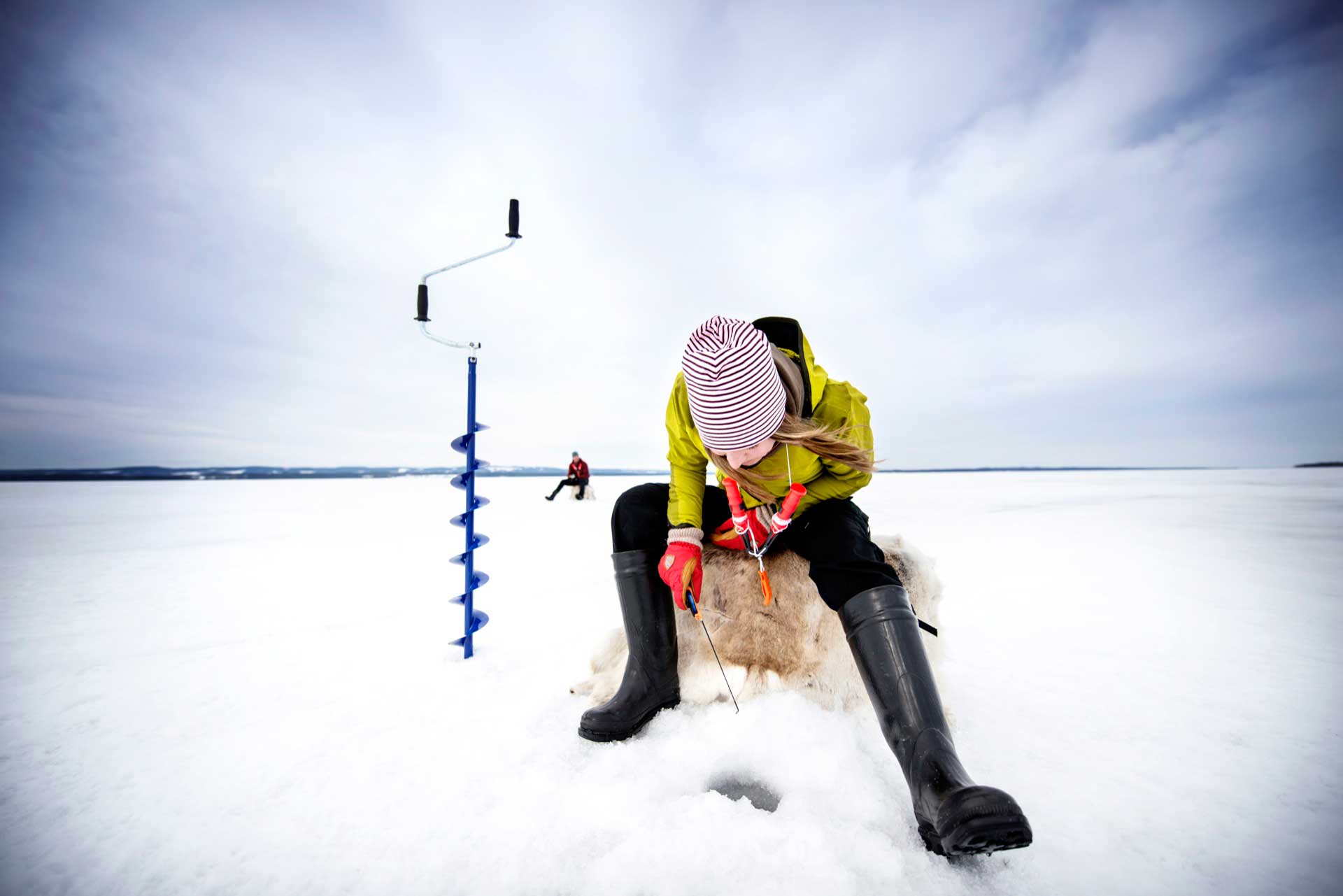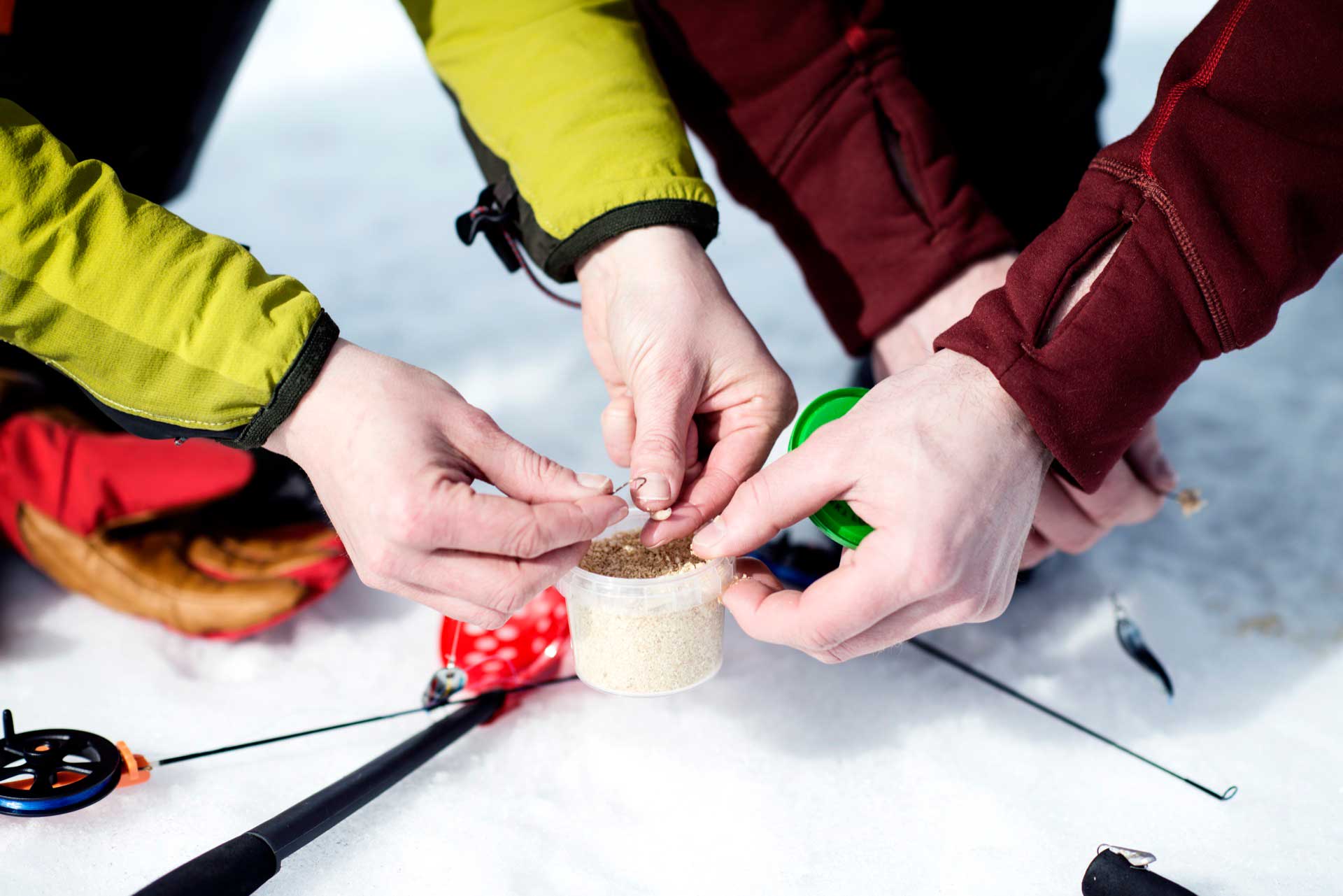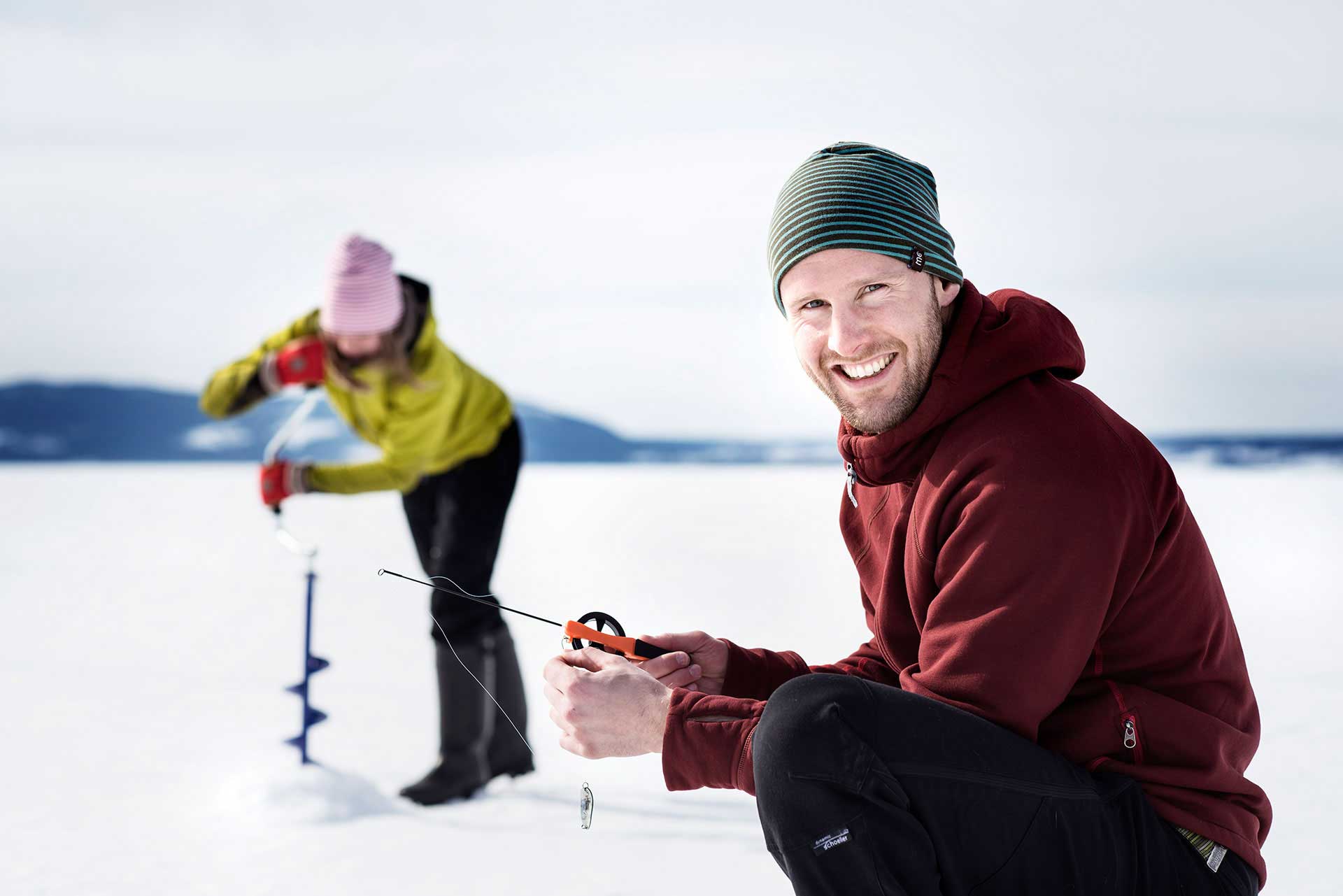Winter Fishing – an Affordable Pastime
Even if you never have been fishing before, winter fishing is something you can easily do on your own without the need for a guide. It’s an easy, simple, effective and relatively affordable pastime, yet the feeling of sitting out on a lake, contemplating life is very soothing. All that’s required is to just concentrate on your little ice fishing rod and stare down the hole that’s drilled in the ice. And if you are lucky, you even get to feel like a provider – bringing food to the table!
The equipment for winter fishing costs a few dollars and with it, it’s possible to hook fish like perch, trout, brown trout, grayling, whitefish and pike. It’s easy to get lost in the jungle of fishing lures and jigs. It´s often enough to have just a few trusted jigs and some simple hooks. Do your homework on the internet and ask your fishing shop for beginner gear.
You can rest assured to find expert ice fishers at your resort in Jämtland Härjedalen, Adventure Sweden. Go the easy way and get an ice fishing guide providing you with all you need and all you need to know. Or, ask your nearest fishing shop or sports store in the chosen destination, if it is possible to rent an ice auger for drilling the hole in the ice. If you are lucky they may even let you in on their second best spot for ice fishing 😉
Remember to wrap up warmly (preferably a wool base layer) and sunglasses since the spring sunshine in March to May reflected in the ice can be extremely strong in our latitude 63. Bring snacks, a well-insulated mat or reindeer skins to sit on and of course safety ice spikes around your neck, should an unfortunate accident occur.
Be sure to keep track of the thickness of the ice. So much can happen so quickly on a warm spring day. Test the thickness of ice by drilling a few holes. It can also be beneficial to study the map before you go out on the ice and watch out for the inlets and outlets to the lake you are on. Ice is always weaker where there is a constant water flow. Another tip is to avoid hanging near the docks and bridges that can make ice weak in the warm spring sunshine.














